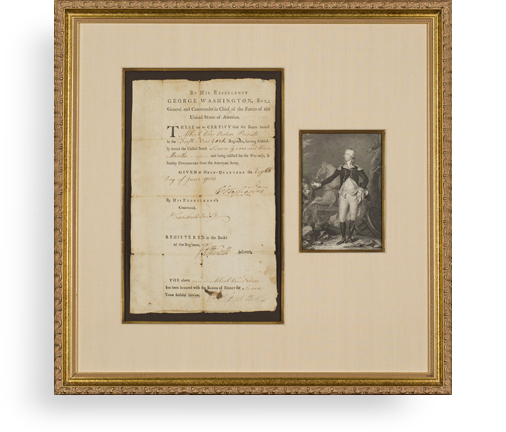sold Ulysses S. Grant Commissions a Civil War Naval Hero

He names him paymaster in the Navy.
John H. Stevenson was appointed Acting Assistant Paymaster and Clerk in the United States Navy on September 19, 1862. His Civil War career was marked by several exploits of exceptional heroism. While attached to the USS Satellite on the Potomac in December 1862, he led a boat expedition ashore, captured a...
John H. Stevenson was appointed Acting Assistant Paymaster and Clerk in the United States Navy on September 19, 1862. His Civil War career was marked by several exploits of exceptional heroism. While attached to the USS Satellite on the Potomac in December 1862, he led a boat expedition ashore, captured a party of Confederates, and destroyed signal and recruiting stations.
In June 1863, while attached to the USS Princess Royal on the West Gulf Blockading Squadron, he reconnoitered in and about an enemy camp. Learning the details of a plan to capture Fort Donaldsville, La., he made plans that enabled the fort to beat off the attack. He further demonstrated his heroism in July 1863 when he volunteered to pick up dispatches from the USS New London, aground under enemy fire, and carried them to Admiral Farragut at New Orleans, a journey of some 85 miles on horseback through enemy territory. He remained in the Navy after the war, serving in U.S. ports, the South Atlantic and Pacific stations, and at Nagasaki, Japan, until retiring with the grade of Pay Inspector in 1893. He was called back to active duty during the Spanish-American War and served as pay officer of the Coast Defense System.
Document Signed as President, on vellum, complete with engravings of an eagle and naval scenes, Washington, June 23, 1870, naming Stevenson a “paymaster in the Navy.” The document is countersigned by Secretary of the Navy George M. Robeson and its blue seal is still intact. Very good with a little darkening and wrinkling to the vellum.
In World War II, the Navy named a destroyer after Stevenson. The USS Stevenson saw action in 1944-1945 in the Pacific Theater. It supported the fast carrier forces during the Iwo Jima and Okinawa operations and the air strikes on the Japanese homeland.

Frame, Display, Preserve
Each frame is custom constructed, using only proper museum archival materials. This includes:The finest frames, tailored to match the document you have chosen. These can period style, antiqued, gilded, wood, etc. Fabric mats, including silk and satin, as well as museum mat board with hand painted bevels. Attachment of the document to the matting to ensure its protection. This "hinging" is done according to archival standards. Protective "glass," or Tru Vue Optium Acrylic glazing, which is shatter resistant, 99% UV protective, and anti-reflective. You benefit from our decades of experience in designing and creating beautiful, compelling, and protective framed historical documents.
Learn more about our Framing Services







































































































